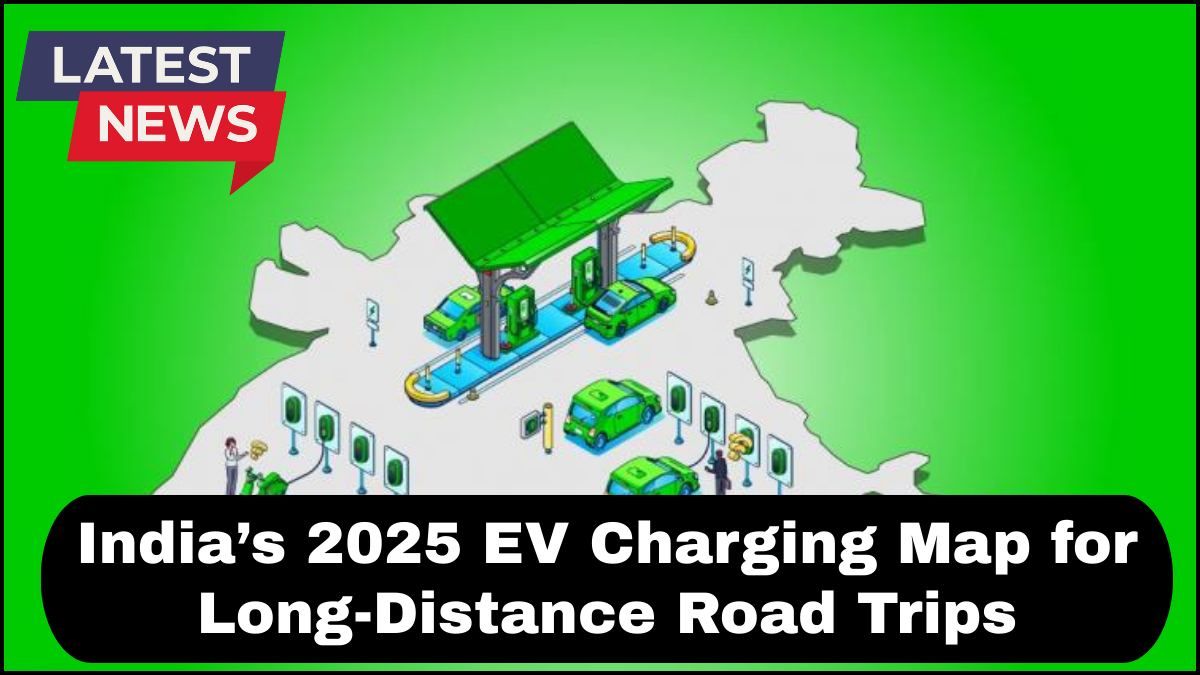As India accelerates its transition to electric mobility, one of the biggest concerns for EV owners has been the lack of accessible and reliable charging infrastructure. That’s changing—fast. By 2025, the Indian government and private stakeholders are set to transform the national landscape with a well-distributed, strategically placed EV charging map tailored to long-distance road trip planning.

Here’s how this new infrastructure is shaping up, what EV users can expect, and how it’s set to redefine the way Indians travel by road.
Strategic Rollout of Charging Stations Across Highways
To support the growing fleet of electric vehicles, the Ministry of Power, in collaboration with public and private partners, has identified major national and state highways for installing fast-charging stations. These stations are expected to appear every 25 to 30 kilometers, targeting the most frequented travel corridors like:
-
Delhi–Mumbai Expressway
-
Golden Quadrilateral (connecting Delhi, Mumbai, Chennai, and Kolkata)
-
Bengaluru–Hyderabad Highway
-
Mumbai–Pune Expressway
The goal is not just widespread coverage, but intelligent distribution. Each location on the EV charging map is chosen based on vehicle density, traffic flow, and proximity to rest areas or food courts—making them convenient for real-world use.
Fast Chargers Are the New Normal
One of the most significant updates to the 2025 EV roadmap is the shift toward DC fast chargers. These high-capacity units, often ranging from 50 kW to 350 kW, can recharge most electric vehicles to 80% in under 45 minutes. This is a game-changer for long-distance road trip planning, where time and convenience are essential.
To ensure compatibility, most stations will support multiple connector types, including CCS2, CHAdeMO, and Bharat DC. Many will also be integrated with apps allowing users to locate nearby stations, check availability, book time slots, and even pay digitally.
Public-Private Partnerships Fueling Growth
Companies like Tata Power, Statiq, Ather Energy, and Fortum are leading the charge (literally). With support from the government’s FAME II scheme and state-level incentives, these companies are expanding their footprint aggressively.
For instance:
-
Tata Power aims to set up over 25,000 charging stations by 2025.
-
Statiq is building a network across the Delhi–NCR region and extending into key tourist circuits.
-
Reliance BP Mobility is partnering with retail and hospitality chains to offer EV charging as a bundled amenity.
These collaborative efforts ensure that the EV charging map evolves not just in volume but in usability and reliability.
Integrated Charging with Hospitality and Retail
Charging doesn’t need to feel like a chore. The 2025 vision includes installing charging points in hotel chains, shopping malls, cafes, and highway dhabas. This turns a charging break into an opportunity for rest, refreshment, or even a meal.
For example, select Indian Oil petrol stations will double as EV charging hubs, with lounges and washroom facilities. Similarly, hospitality players like Lemon Tree and Oberoi are beginning to offer EV-compatible parking and charging services for traveling guests.
Smart Road Trip Planning: EVs Catching Up with Petrol
Thanks to this new map, road trip planning with an EV is becoming as seamless as with a conventional car. Mobile apps like ReChargeIndia, PlugShare, and Google Maps integration allow users to chart their route with charging stops along the way.
You can now plan a 500 km trip with confidence, knowing that you’ll have multiple charging stations en route. Plus, many apps factor in battery level, vehicle model, terrain, and traffic to optimize your stop suggestions.
Environmental Impact and Future Goals
By promoting electric road travel, India is actively reducing its carbon emissions, especially in urban and highway corridors plagued by pollution. The 2025 EV charging map is a stepping stone toward a net-zero emission target by 2070.
The long-term vision includes renewable-powered charging stations, battery swapping networks, and even solar-integrated charging plazas.
FAQs
Q1. How can I find EV charging stations on my route?
You can use apps like PlugShare, Tata Power EZ Charge, or Google Maps to view the complete EV charging map, see real-time availability, and plan your charging stops in advance.
Q2. Are EV charging stations safe and secure for long road trips?
Yes. Most stations are installed in well-lit areas with CCTV surveillance, nearby amenities, and often 24/7 access.
Q3. What’s the average time to charge an EV on the highway?
With fast chargers, most EVs can reach 80% charge in 30–45 minutes, depending on the battery capacity and charger output.
Q4. Will my EV be compatible with all charging stations?
Most highway chargers support universal connectors like CCS2 or Bharat DC, ensuring compatibility with a wide range of EV models.
Q5. Can I pay digitally at EV charging stations?
Absolutely. UPI, credit/debit cards, digital wallets, and in-app payments are supported at almost all modern stations.
click here to learn more